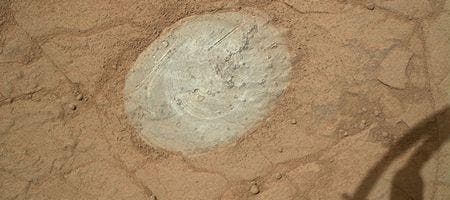Another instrument was been successfully tested and used by the Curiosity rover: the dust sweeper.
The mission team has successfully cleared a five-centimeter patch from a flat rock to give a clearer view of its texture and chemistry and to avoid additional sample contaminants. The tool is relatively simple, consisting of a motorized, wire-bristle brush which cleanses the rock surface for further inspection.
The thing is, such a simple tool is really important – without it, the Alpha Particle X-ray Spectrometer and the Mars Hand Lens Imager just couldn’t do their job right.
“We wanted to be sure we had an optimal target for the first use,” said Diana Trujillo, the mission’s activity lead for the Dust Removal Tool. “We need to place the instrument within less than half an inch of the target without putting the hardware at risk. We needed a flat target, one that wasn’t rough, one that was covered with dust. The results certainly look good.”
Everything went according to plan, and engineers working on the project hope in the next couple of weeks, they will also use the rover’s hammering drill – one of the key instruments of the Curiosity mission.










